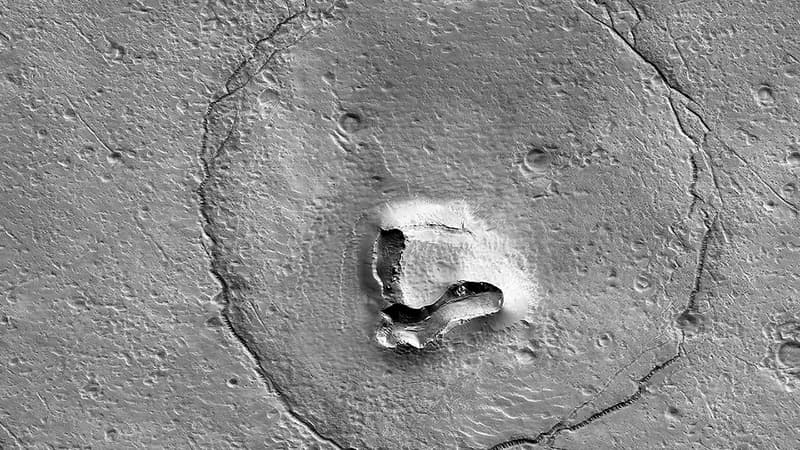After the mysterious alien door and the man tanning on a rock, here’s the bear head. On Wednesday, the Twitter account for HiRISE, a high-resolution camera aboard the Mars Reconnaissance Orbiter satellite in orbit around Mars, posted an unusual photo.
It shows a strange geological formation, which may resemble the head of a bear, captured on the surface of the red planet. “A bear on Mars?” he then falsely questioned the Twitter account for the HiRISE camera, powerful enough to photograph a kitchen table from space.
Craters, a gutted hill…
According to the analysis delivered by Alfred McEwen, world-renowned planetary geologist in charge of the HiRISE program, each of the observed elements can find a rational explanation.
“There is a hill with a collapsed V-shaped structure (the nose), two craters (the eyes) and a circular pattern (the head),” he explains at the University of Arizona.
In more detail, the circular shape could be due to the coating of a crater by a deposit, lava or mud. Explanations that did not prevent, in response to the HiRISE tweet, Internet users from sharing numerous photomontages.
a pareidolia
Photographs of the planet Mars are regularly the subject of misappropriation or unfounded interpretations. Thus, last February, some believed they saw a tanned man in a photograph taken by the Perseverance rover.
In May, it was a photo this time shared by the Curiosity rover that had been the subject of multiple interpretations. Some had seen a door used by aliens there. The scientists ruled out that possibility, explaining that the rock formation was probably related to seismic activity.
Actually, this mania for seeing familiar elements in nature or on other planets has a name: it is pareidolia.
“The mind will have that natural and cognitive tendency to give forms to things it does not know to try not to remain in an unknown or mystical dynamic,” Victoria Aguilar, a clinical psychologist, explained to BFMTV last February.
Source: BFM TV


